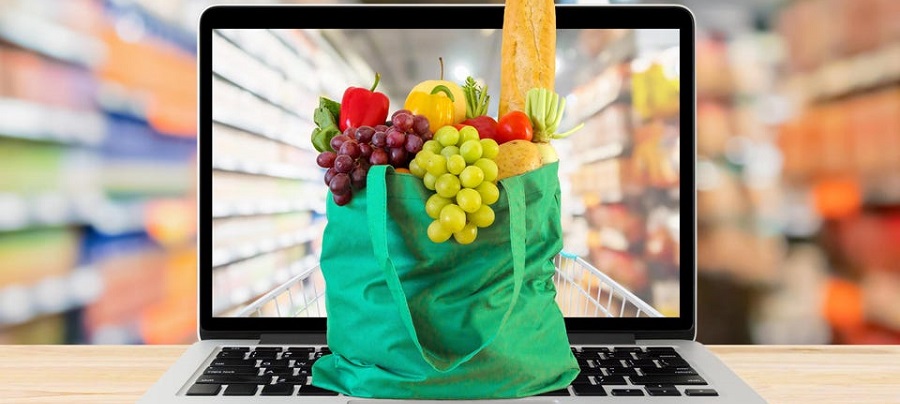Grocery stores online, also known as e-groceries or online supermarkets, are a growing trend in the retail industry. They are websites or mobile apps that allow customers to shop for groceries from the comfort of their own homes. These stores offer a wide variety of products, including fresh produce, meat, dairy, baked goods, and household items. Some online grocery stores also offer additional services such as meal planning and recipe suggestions.
One of the main advantages of shopping at an online grocery store is convenience. Customers can place orders at any time and have their groceries delivered to their doorsteps or pick them up at a designated location. Many online grocery stores also offer the option to schedule recurring deliveries, making it easy for customers to stay stocked up on their regular items. Online grocery stores also usually have a wider selection of products than traditional brick-and-mortar stores, and some even offer exclusive deals and discounts for online shoppers.
Online grocery stores also use data and technology to personalize the shopping experience for customers. For example, they can suggest products based on a customer's previous purchases, browsing history and search history. This can help customers discover new products and save time by not having to search for what they need.
Online grocery stores have also made it easier for customers to compare prices and save money. They can easily compare prices of different products across different stores, and can also use coupons and promo codes to get discounts.
There are some limitations to online grocery shopping, such as the cost of delivery, availability of certain products, and quality of products. Some perishable items like fresh produce and meat may not be available for delivery, and customers may not be able to inspect the quality of products before purchase. However, many online grocery stores have implemented measures to ensure that products are fresh and of high quality upon delivery.
Overall, online grocery stores are becoming increasingly popular, offering customers convenience and wider selection of products, while also providing a personalized shopping experience.
How do online grocery stores differ from traditional brick-and-mortar grocery stores?
Online grocery stores differ from traditional brick-and-mortar grocery stores in a number of ways. One of the main differences is that online grocery stores allow customers to shop for groceries from the comfort of their own homes, using a computer or mobile device, while traditional grocery stores require customers to physically visit the store. Additionally, online grocery stores typically have a wider selection of products available, as they do not have the same space constraints as traditional stores. Online grocery stores also often offer delivery or pickup options for customers, while traditional grocery stores typically do not. Additionally, online grocery stores have the ability to use data to personalize the shopping experience, whereas traditional stores may not have this capability. Another difference is that online grocery stores usually have a smaller overhead cost and can pass on the savings to the customer.
What are the benefits of shopping for groceries online?
There are several benefits to shopping for groceries online, including:
-
Convenience: Online grocery stores allow customers to shop for groceries from the comfort of their own homes, at any time of the day. They also often offer delivery or pickup options, making it easy for customers to receive their groceries without having to leave their homes.
-
Wider selection of products: Online grocery stores often have a wider selection of products than traditional brick-and-mortar stores, including a variety of international and specialty items.
-
Personalized shopping experience: Online grocery stores use data and technology to personalize the shopping experience for customers, by suggesting products based on their previous purchases and browsing history.
-
Easy price comparison: Shopping online makes it easy for customers to compare prices across different stores and products, helping them save money.
-
Time-saving: Online grocery stores can save customers time by allowing them to create shopping lists and save previous orders, making it easy to reorder items.
-
Accessibility: Online grocery stores can make grocery shopping more accessible for people with disabilities, elderly, or those who live in remote areas.
-
Eco-friendly: Shopping for groceries online can reduce the environmental impact of transportation and packaging waste, as well as reducing the need for physical stores.
-
Subscription service: Some online grocery stores offer a subscription service for regular customers, allowing them to schedule recurring deliveries of their favorite items.
-
Out of stock items: Online grocery stores can handle out of stock items or substitutions much better than physical stores, as they can suggest similar products or give the option of backordering the item.
How do online grocery stores ensure the freshness of their products?
Online grocery stores use a variety of methods to ensure the freshness of their products, including:
-
Cold storage: Many online grocery stores have refrigerated warehouses to store perishable items such as meat, dairy, and produce at the appropriate temperatures.
-
Quick delivery: Online grocery stores often prioritize quick delivery of products to ensure they reach customers while still fresh. They typically use advanced logistics technology and software to optimize delivery routes and ensure timely delivery.
-
Quality inspection: Many online grocery stores have quality control procedures in place to inspect products for freshness and quality before they are shipped out to customers. This can include visual inspections as well as testing for temperature and other factors.
-
Packaging: Online grocery stores use proper packaging methods to keep products fresh during transportation, such as insulated containers for temperature-sensitive items, and controlled atmosphere packaging for fruits and vegetables.
-
Partnering with local farmers and producers: Many online grocery stores partner with local farmers and producers to ensure they have a steady supply of fresh products. This also helps to cut down on the transportation time and costs.
-
Same-day delivery: Some online grocery stores offer same-day delivery options, allowing customers to receive their products as soon as they are harvested or produced, ensuring the maximum freshness.
-
Substitution and out-of-stock items: Online grocery stores often have procedures in place to handle out-of-stock items and substitutions, such as suggesting similar products or giving customers the option of backordering the item.
-
Communication with customers: Online grocery stores may communicate with customers about the delivery schedule, and provide them with the information about the freshness of the products.
Overall, online grocery stores are constantly working to improve their methods for ensuring the freshness of their products and provide the best possible experience for customers.
How do online grocery stores handle returns and exchanges?
Online grocery stores handle returns and exchanges in a variety of ways, depending on the store's policies and the specific situation.
-
Product quality: If a customer receives a product that is spoiled or of poor quality, the online grocery store may offer a refund or exchange for the item. In this case, the customer will be required to provide a photograph or video of the product in question as well as the proof of purchase.
-
Damaged products: If a product is damaged during delivery, the online grocery store may offer a refund or exchange. In this case, the customer will be required to provide a photograph or video of the damaged product and the packaging as well as the proof of purchase.
-
Incorrect items: If a customer receives the wrong item, the online grocery store will usually offer to exchange the item or provide a refund.
-
Change of mind: Some online grocery stores may accept returns or exchanges for items that the customer no longer wants, but it will depend on the store's policy. In this case, the customer may be required to pay for the return shipping, or may be issued store credit instead of a refund.
-
Time frame: Most online grocery stores have a time frame for accepting returns and exchanges, such as within a certain number of days from the delivery date.
-
Communication: Online grocery stores often have a customer service department or contact form for customers to report any issues with their orders and request a return or exchange.
In general, online grocery stores have return and exchange policies in place to ensure customer satisfaction and handle any issues that may arise. They typically require customers to provide proof of purchase and photographs or videos of the products in question, and may have specific time frames and conditions for accepting returns and exchanges.
What is the process for ordering groceries online?
The process for ordering groceries online typically involves the following steps:
-
Browse the website: Customers can browse the online grocery store's website and select the products they wish to purchase. They can search for products by category, brand, or using the search bar.
-
Add to cart: Once customers have selected their products, they can add them to their online cart by clicking on the "add to cart" button.
-
Review and edit the cart: Customers can review the items in their cart, edit quantities, or remove items if needed.
-
Checkout: When customers are ready to complete their purchase, they can proceed to checkout by clicking on the "checkout" button.
-
Enter shipping information: Customers will be prompted to enter their shipping information, such as name, address, and contact details.
-
Select payment method: Customers can select their preferred payment method, such as credit card, debit card, or online banking.
-
Review and submit the order: Customers can review their order to ensure that all the details are correct, and then submit the order.
-
Order confirmation: After the order is submitted, customers will receive an order confirmation via email or text message.
-
Track the order: Customers can track the status of their order and receive updates on the estimated delivery time.
-
Delivery/Pickup: Customers can choose to have their groceries delivered to their home or pick them up at a designated location, depending on the store's options.
The process of ordering groceries online is relatively simple and straightforward, and typically takes only a few minutes to complete. Some online grocery stores also offer mobile apps, which make it even more convenient to shop and order groceries on-the-go.


